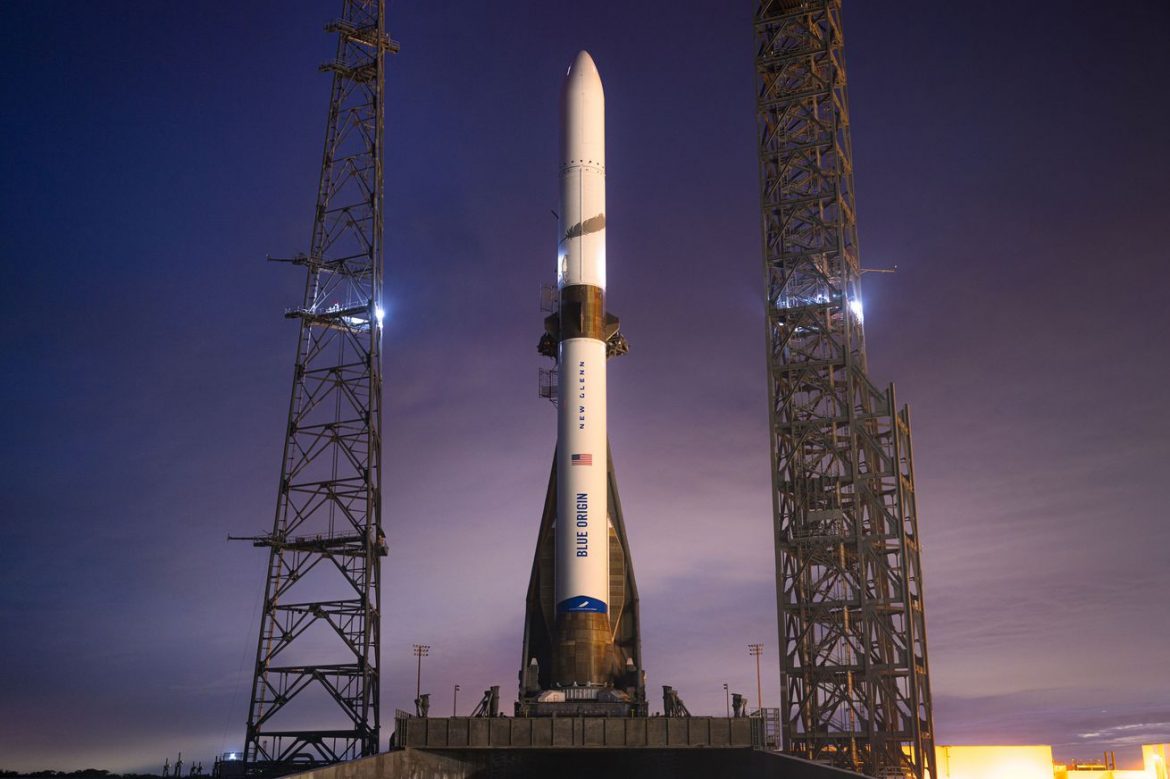New Glenn on the launchpad. | Image: Blue Origin
The billionaire space race entered a new phase today when Jeff Bezos’ Blue Origin successfully launched its 320-foot-tall New Glenn rocket this morning from Cape Canaveral in Florida.
At 2:03AM ET this morning, New Glenn’s seven reusable BE-4 engines ignited to propel the NG-1 rocket into space, with the second stage and payload reaching orbit to achieve Blue Origin’s primary mission goal.
In parallel, the first stage booster — dubbed, “So You’re Telling Me There’s A Chance” — autonomously descended to its landing platform located several hundred miles downrange in the Atlantic. As it approached the Jacklyn barge, the booster lost contact with control and stopped sending data. Blue Origin confirmed that the booster was lost during landing.
Second stage engine cutoff confirmed. New Glenn’s second stage and payload are now in orbit. Another burn coming up…
— Blue Origin (@blueorigin) January 16, 2025
Nevertheless, Blue Origin’s goal for today’s uncrewed launch was for New Glenn to reach orbit. Anything beyond that would be a bonus — like activating a prototype of the Blue Ring Pathfinder payload vehicle or landing the reusable booster. “No matter what, we will learn a lot,” said Blue Origin CEO Dave Limp ahead of today’s launch.
Image: Blue Origin
Today’s flight profile. Success meant launching into orbit, everything else was a “bonus.”
The launch comes after almost a decade of development and puts Elon Musk’s SpaceX on notice. New Glenn has about the same carrying capacity as SpaceX’s Falcon Heavy, and is meant to shuttle cargo into space on the reusable launch platform. This includes satellites for Blue Origin’s rival to Starlink’s high-speed low-latency internet service. The first of these 3,236 Project Kuiper satellites are expected to launch into low Earth orbit soon, aboard SpaceX’s Falcon 9 rocket before New Glenn can take over the heavy lifting.

